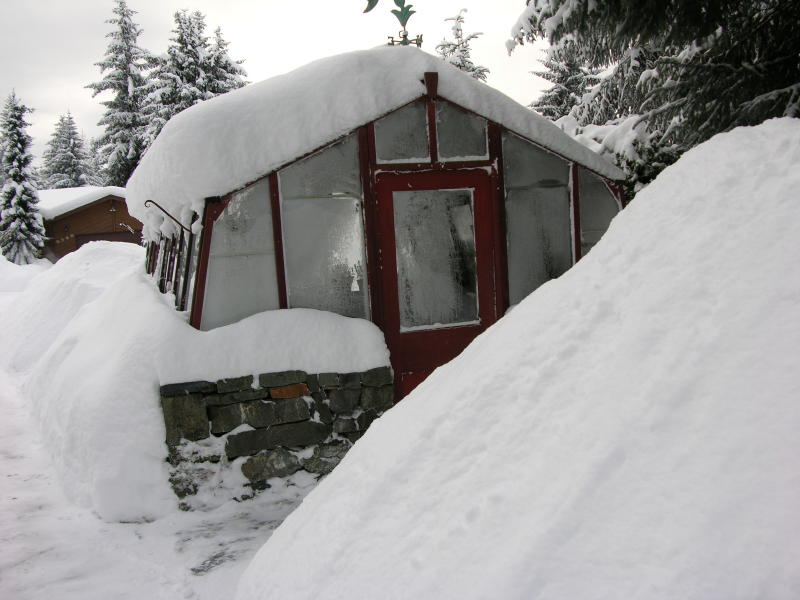
When considering the energy efficiency of a greenhouse, the focus is usually on the glazing material (glass, twin wall plastics, etc). Although greenhouse glazing represents the majority of the surface area, it is not the only factor to consider in building a greenhouse for both good plant growth and energy efficiency. Important factors to consider include the structure (both materials and how it’s made), glazing, style and location.
The greenhouse structural framework plays a role in conductive heat loss. Wood as a greenhouse framing material is 1400 times more energy efficient than aluminum. In cold, dry climates (especially in the Midwest), ice can actually form on the inside framework of an aluminum greenhouse. This can be especially annoying if your greenhouse has an aluminum door. You could find your door so iced over you can’t get into your greenhouse without a lot of effort. Heating that type of structure can also be very expensive.
Another source of heat loss in a greenhouse is air infiltration. A poorly made greenhouse, whose parts don’t fit snugly together, will allow cold air into the heated greenhouse space. An energy efficient greenhouse will be tight enough to maintain heat levels, but “breathe” just enough that plants have adequate CO2 for growth. The correct balance can be hard to find, especially in cold and windy climates.
With regards to glazing, twin and triple walled polycarbonate plastics are used extensively in greenhouses for heat retention. Twin & triple walled polycarbonate greenhouse glazing will increase heat retention by 50% to 240%. In a small home greenhouse, the downside is not being able to see in and out of the glazing materials, creating a claustrophobic feeling inside. Also, plastics do not create an aesthetically pleasing greenhouse when it is viewed from the outside. I often encourage greenhouse customers to use twin wall materials in the roof and a layer of exterior clear glass with an inner layer of clear acrylic in the walls. This creates a greenhouse that is energy efficient, good looking and fun to use.
A third factor affecting the energy efficiency of a greenhouse is design. By choosing the right design you can affect the greenhouse’s ability to retain heat. In cold windy climates, building a pit style greenhouse may be appropriate. By lowering the greenhouse floor 2 to 3 feet in the ground, exposure to wind is reduced and the ground temperature at the floor is higher. In standard greenhouses, the use of thermal mass materials (concrete, water barrels, etc), can help maintain temperatures by absorbing heat from the winter sun during the day, and radiating that heat at night.
Greenhouse location can also affect efficiency. Try to locate the greenhouse where it gets optimal amounts of sun and/or where it is more protected from fierce winter winds. A greenhouse with one side and/or end attached to a building will have less glazing material exposed. The base wall height will also affect the amount of glazing exposed.
Achieving energy efficiency in a greenhouse has to be handled on a case by case basis. Energy efficiency in a greenhouse has to trade off with the desired growing environment, architectural looks, and, of course, the cost of the structure.
Rick Warner manufactured redwood and glass residential greenhouses for over 30 years.
Related Articles & Free Email Newsletter
Building a Seasonal Greenhouse
Maintenance on Indoor Gardening and Greenhouse Equipment




Comment here